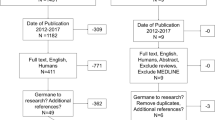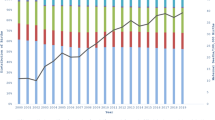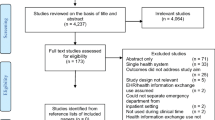Abstract
Objectives: Birth certificate and hospital discharge data are relied upon heavily for national surveillance and research on maternal health. Despite the great importance of these data sources, the recording accuracy in these datasets, comparing birth attendant type, has not been evaluated. The study objective was to assess the variation in chart documentation accuracy between certified nurse-midwives (CNMs) and physicians (MDs) for selected maternal variables using birth certificate and hospital discharge data. Methods: Data was obtained on women delivering in 10 Washington State hospitals that had both CNM and MD-attended births in 2000 (n = 2699). Using the hospital medical record as the gold standard of accuracy, the true positive rate (TPR) for selected maternal medical conditions, pregnancy complications, and intrapartum and postpartum events was calculated for CNMs and MDs using birth certificate data, hospital discharge data, and both data sources combined. Results: The magnitude of TPRs for most recorded maternal medical conditions, pregnancy complications, and intrapatum and postpartum events was higher for CNMs than for MDs. TPRs were significantly higher in birth certificate records for pregnancy-induced hypertension, premature rupture of membranes, labor augmentation, induction of labor, and vaginal birth after cesarean (VBAC) for CNM-attended births relative to MDs. Among combined data sources, CNM TPRs were significantly higher for pregnancy-induced hypertension and premature rupture of membranes. Conclusions: CNMs had consistently higher accuracy of recorded maternal medical conditions, pregnancy complications, and intrapartum and postpartum events when compared to MDs for all data sources, with several being statistically significant. Our findings highlight discrepancies between CNM and MD hospital chart documentation, and suggest that epidemiologic researchers consider the issue of measurement error and birth attendant type.
Similar content being viewed by others
References
Martin JA, Hamilton BE, Sutton PD, Ventura SJ, Menacker F, Kirmeyer S. Births: final data for 2004. Natl Vital Stat Rep 2006;55(1):1–101.
Adams M, Herman, A, Notzon, F. International symposium on maternally-linked pregnancy outcomes, Atlanta, Georgia, September 1995: proceedings and abstracts. Paediatr Perinat Epidemiol 1997;11(suppl):1–150.
Bruce FC. Highlights from the national summit on safe motherhood: Investing in the health of women. Matern Child Health J 2002;6(1):67–9.
Green DC, Moore JM, Adams MM, Berg CJ, Wilcox LS, McCarthy BJ. Are we underestimating rates of vaginal birth after previous cesarean birth? The validity of delivery methods from birth certificates. Am J Epidemiol 1998;147(6):581–6.
Lydon-Rochelle M, Holt VL, Easterling TR, Martin DP. Risk of uterine rupture during labor among women with a prior cesarean delivery. N Engl J Med 2001;345(1):3–8.
Delaney T, Young DC. Spontaneous versus induced labor after a previous cesarean delivery. Obstet Gynecol 2003;102(1):39–44.
Smith GC, Pell JP, Cameron AD, Dobbie R. Risk of perinatal death associated with labor after previous cesarean delivery in uncomplicated term pregnancies. JAMA 2002;287(20):2684–90.
Ananth CV, Berkowitz GS, Savitz DA, Lapinski RH. Placental abruption and adverse perinatal outcomes. JAMA 1999;282(17):1646–51.
Kyrklund-Blomberg NB, Gennser G, Cnattingius S. Placental abruption and perinatal death. Paediatr Perinat Epidemiol 2001;15(3):290–7.
Parrish KM, Holt VL, Connell FA, Williams B, LoGerfo JP. Variations in the accuracy of obstetric procedures and diagnoses on birth records in Washington State, 1989. Am J Epidemiol 1993;138(2):119–27.
Watkins ML, Edmonds L, McClearn A, Mullins L, Mulinare J, Khoury M. The surveillance of birth defects: the usefulness of the revised US standard birth certificate. Am J Public Health 1996;86(5):731–4.
Piper JM, Mitchel EF, Jr, Snowden M, Hall C, Adams M, Taylor P. Validation of 1989 Tennessee birth certificates using maternal and newborn hospital records. Am J Epidemiol 1993;137(7):758–68.
Dobie SA, Baldwin LM, Rosenblatt RA, Fordyce MA, Andrilla CH, Hart LG. How well do birth certificates describe the pregnancies they report? The Washington State experience with low-risk pregnancies. Matern Child Health J 1998;2(3):145–54.
Buescher PA, Taylor KP, Davis MH, Bowling JM. The quality of the new birth certificate data: a validation study in North Carolina. Am J Public Health 1993;83(8):1163–5.
Hexter AC, Harris JA, Roeper P, Croen LA, Krueger P, Gant D. Evaluation of the hospital discharge diagnoses index and the birth certificate as sources of information on birth defects. Public Health Rep 1990;105(3):296–307.
Snell LM, Little BB, Knoll KA, Johnston WL, Jr, Rosenfeld CR, Gant NF. Reliability of birth certificate reporting of congenital anomalies. Am J Perinatol 1992;9(3):219–22.
Zollinger TW, Przybylski MJ, Gamache RE. Reliability of Indiana birth certificate data compared to medical records. Ann Epidemiol 2006;16(1):1–10.
Lydon-Rochelle MT, Holt VL, Nelson JC, Cardenas V, Gardella C, Easterling TR, et al. Accuracy of reporting maternal in-hospital diagnoses and intrapartum procedures in Washington State linked birth records. Paediatr Perinat Epidemiol 2005;19(6):460–71.
Lydon-Rochelle MT, Holt VL, Cardenas V, Nelson JC, Easterling TR, Gardella C, et al. The reporting of pre-existing maternal medical conditions and complications of pregnancy on birth certificates and in hospital discharge data. Am J Obstet Gynecol 2005;193(1):125–34.
Lydon-Rochelle M, Holt VL. HIPAA transition: challenges of a multisite medical records validation study of maternally linked birth records. Matern Child Health J 2004;8(1):35–8.
Pepe M. The statistical evaluation of medical tests for classification and prediction. 1st ed. Oxford: Oxford University Press; 2003.
U.S. Department of Health and Human Services, Centers for Disease Control and Prevention. National Hospital Discharge Survey Description. 2006 10/4/06 [cited 12/1/06]; Available from: http://www.cdc.gov/nchs/about/major/hdasd/nhdsdes.htm.
MacDorman MF, Singh GK. Midwifery care, social and medical risk factors, and birth outcomes in the USA. J Epidemiol Community Health 1998;52(5):310–7.
American College of Nurse-Midwives. 7/8/06 [cited 2006 7/8/06]; Available from: www.acnm.org.
Butler J, Abrams B, Parker J, Roberts JM, Laros RK, Jr. Supportive nurse-midwife care is associated with a reduced incidence of cesarean section. Am J Obstet Gynecol 1993;168(5):1407–13.
Public Citizen’s Health Research Group. Encouraging the use of nurse-midwives. Washington DC; 1995.
US Congress. Nurse practitioners, physician assistants, and certified nurse-midwives: A policy analysis. In: Office of Technology Assessment, editor.: US Government Printing Office; 1986.
Rosenblatt RA, Dobie SA, Hart LG, Schneeweiss R, Gould D, Raine TR, et al. Interspecialty differences in the obstetric care of low-risk women. Am J Public Health. 1997;87(3):344–51.
Yankou D, Petersen BA, Oakley D, Mayes F. Philosophy of care. A pilot study comparing certified nurse-midwives and physicians. J Nurse Midwifery 1993;38(3):159–64.
Rooks JP, Weatherby NL, Ernst EK, Stapleton S, Rosen D, Rosenfield A. Outcomes of care in birth centers. The National Birth Center Study. N Engl J Med 1989;321(26):1804–11.
Center for Health Statistics, Washington State Department of Health. Birth Attendant by County of Occurrence, 2000. 2000 12/23/05 [cited 2006 7/15/06]; Available from: http:// www.doh.wa.gov/ehsphl/chs/chs-data/birth/download/ 2000.xls.
Lederman SA, Paxton A. Maternal reporting of prepregnancy weight and birth outcome: consistency and completeness compared with the clinical record. Matern Child Health J 1998;2(2):123–6.
Parratt J, Johnston J. Planned homebirths in Victoria, 1995–1998. Aust J Midwifery 2002;15(2):16–25.
Schmidt N, Abelsen B, Oian P. Deliveries in maternity homes in Norway: results from a 2-year prospective study. Acta Obstet Gynecol Scand 2002;81(8):731–7.
Murphy PA, Fullerton J. Outcomes of intended home births in nurse-midwifery practice: a prospective descriptive study. Obstet Gynecol 1998;92(3):461–70.
Wiegers TA, Van Der Zee J, Keirse MJ. Transfer from home to hospital: what is its effect on the experience of childbirth? Birth 1998;25(1):19–24.
Davies J, Hey E, Reid W, Young G. Prospective regional study of planned home births. Home Birth Study Steering Group. BMJ 1996;313(7068):1302–6.
Janssen PA, Lee SK, Ryan EM, Etches DJ, Farquharson DF, Peacock D, et al. Outcomes of planned home births versus planned hospital births after regulation of midwifery in British Columbia. CMAJ 2002;166(3):315–23.
Lieberman E, Ernst EK, Rooks JP, Stapleton S, Flamm B. Results of the national study of vaginal birth after cesarean in birth centers. Obstet Gynecol 2004;104(5 Pt 1):933–42.
Chambliss LR, Daly C, Medearis AL, Ames M, Kayne M, Paul R. The role of selection bias in comparing cesarean birth rates between physician and midwifery management. Obstet Gynecol 1992;80(2):161–5.
Acknowledgements
This study was supported by grant S1838-21/21 from the Association of Schools of Public Health and Centers for Disease Control and Prevention Cooperative Agreement.
Author information
Authors and Affiliations
Corresponding author
Rights and permissions
About this article
Cite this article
Bradford, H.M., Cárdenas, V., Camacho-Carr, K. et al. Accuracy of Birth Certificate and Hospital Discharge Data: A Certified Nurse-Midwife and Physician Comparison. Matern Child Health J 11, 540–548 (2007). https://doi.org/10.1007/s10995-007-0178-3
Received:
Accepted:
Published:
Issue Date:
DOI: https://doi.org/10.1007/s10995-007-0178-3




